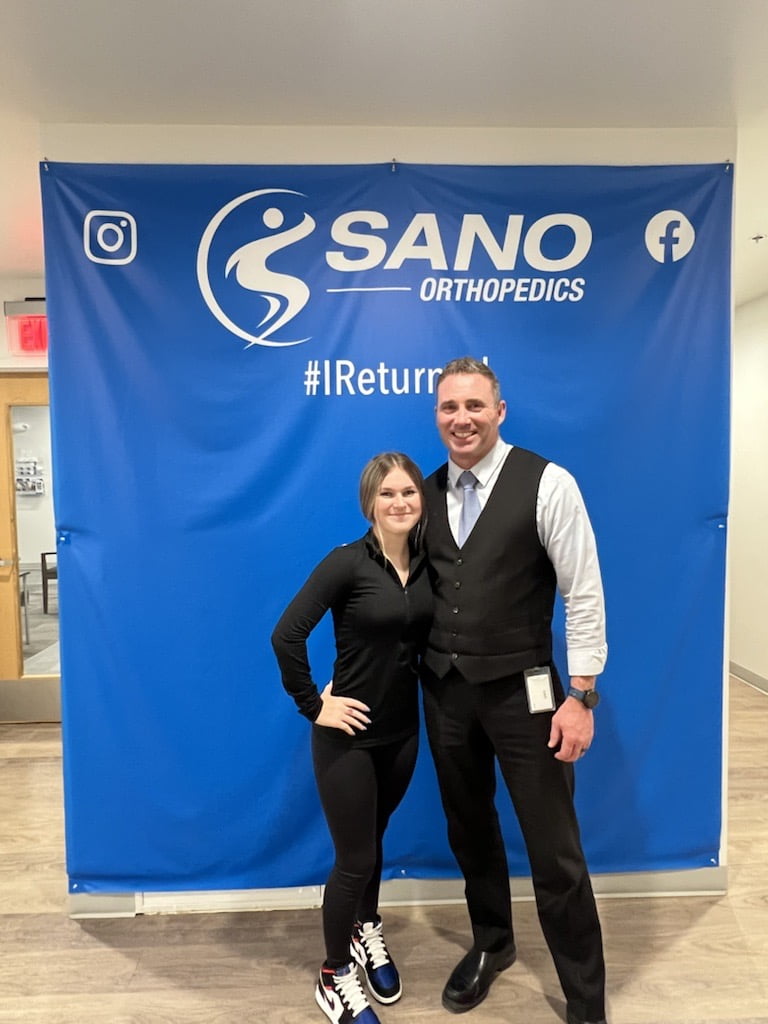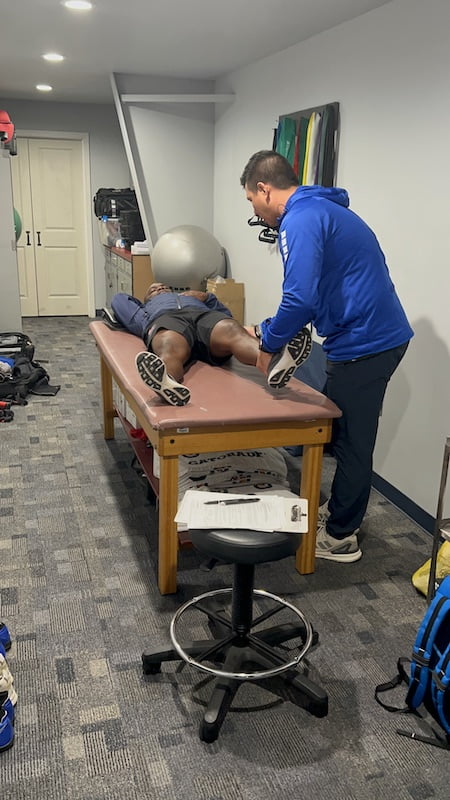Common Soccer Injuries
Soccer is an exciting, fast-paced sport where players must perform sudden acceleration, abrupt deceleration, rapid change of direction, jumping, and landing movements. The physical and fast-paced nature of the game puts players at risk for injuries, most of which are lower extremity injuries. Ankle sprains, knee ACL injuries, muscle strains, and concussions top the list.
Ankle Sprains
Ankle sprains are common in sports that require jumping and cutting, like soccer. The most common sprain is rolling onto the outside of the foot. Sprains can range from tiny tears to complete tears. Fortunately, most ankle sprains are treated without surgery.
![]()
Book Online
We have a number of ways you can schedule an appointment at Sano Orthopedics.
Online
Text
Phone
Message Us

ACL Injuries
Running at high speeds with quick changes in direction can lead to knee injuries. ACL injuries can occur by landing awkwardly after jumping, if a player tries to change direction with a foot being caught, or contact injury, which was the case for Dr. Witte’s patient, Triniti. Triniti was run into by another player, which caused her to tear her ACL.
For athletes, ACL injuries usually require surgery to return athletes to their sports. ACL injuries can be complex, and intervention and recovery timelines vary by the patient. Unfortunately, females are more at risk for ACL injuries.
Muscle Strains
Pulled muscles occur when you stretch your muscle too far. The most common muscles injured in soccer are the groin, hamstring, and calf.
The hamstring muscle group fires and propels an athlete forward when sprinting. The hamstring generates enormous force with quick changes in direction or rapid acceleration from standing still. Like hamstring strains, calf and groin strains also vary in severity and recovery. Conservative treatments, like rest, usually heal a muscle strain.
Concussions
As a contact sport, soccer poses a significant risk for concussions and head injuries. The head is at risk of contact with the ground during a fall or with another player’s head, elbow, knee, or foot. While steps have been taken to reduce the chance of concussions in soccer, many injuries still occur.
Most concussions occur without a loss of consciousness or an obvious sign that something is wrong with a player’s brain function. In addition, concussion symptoms will vary from person to person. Thus, all symptoms and unusual behaviors following a hit to the head should be taken seriously.
Other Soccer Injuries
Overuse injuries, such as Achilles tendinitis and shin splints, frequently occur in soccer players. These injuries occur from repetitive impact activities such as running and jumping.
Injuries vary based on age or position, too. Sever’s disease (heel pain) and kneecap bursitis are common in younger soccer players. Clavicle fractures are more common in goalies.
Preventing Soccer Injuries
Warming up properly will ensure the body is prepared to perform at an optimal level, which will help prevent injuries and improve performance. In addition to a proper warm-up, strength training, mobility, and dynamic stretching can significantly prevent injuries. Adequate rest is also essential; playing while (tired/fatigued) increases your chance of injury.
Dr. Matt Daggett shares more on soccer injuries in young athletes

Recent News
Orthopedic Partner of KC Monarchs Baseball Team
Sano Orthopedics is proud to be the official orthopedic partner of the Kansas City Monarch baseball team. Caring for athletes is best done as a team, which is our approach to all patients.
Physical Therapist to Surgeon: Dr. Rob Comrie’s Journey in Joint Replacement
Dr. Rob Comrie’s journey from a physical therapist to an orthopedic surgeon is not just a career transition but a testament to the profound impact of diverse experiences in shaping his medical practice.
Bringing Care Closer: New Office in Raymore, MO
Bringing Care Closer: New Office in Raymore, MOAt Sano, our commitment to providing exceptional health care takes a new step forward with the unveiling of our latest office in Raymore, Missouri. Scheduled to open its doors in late March, this new office allows us to...
